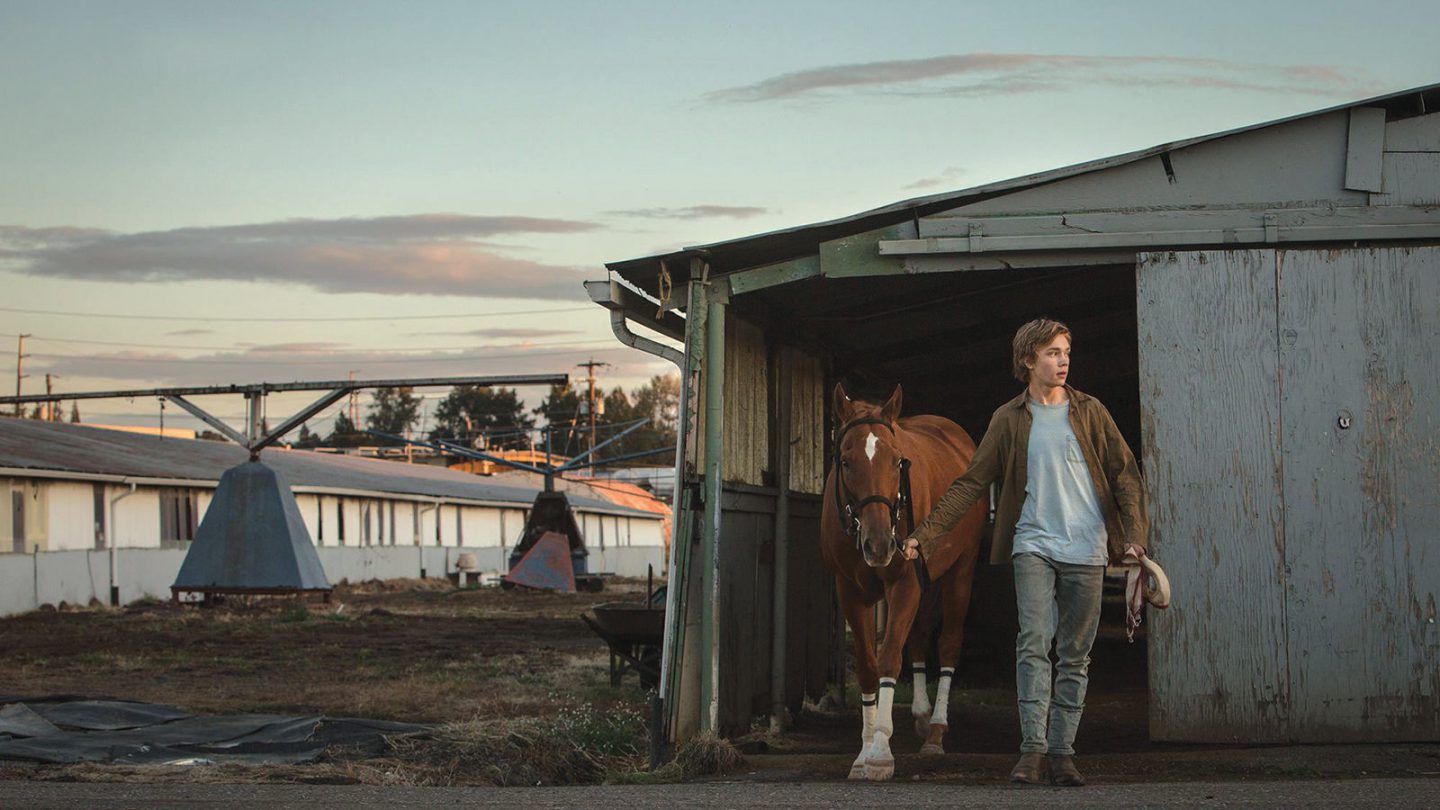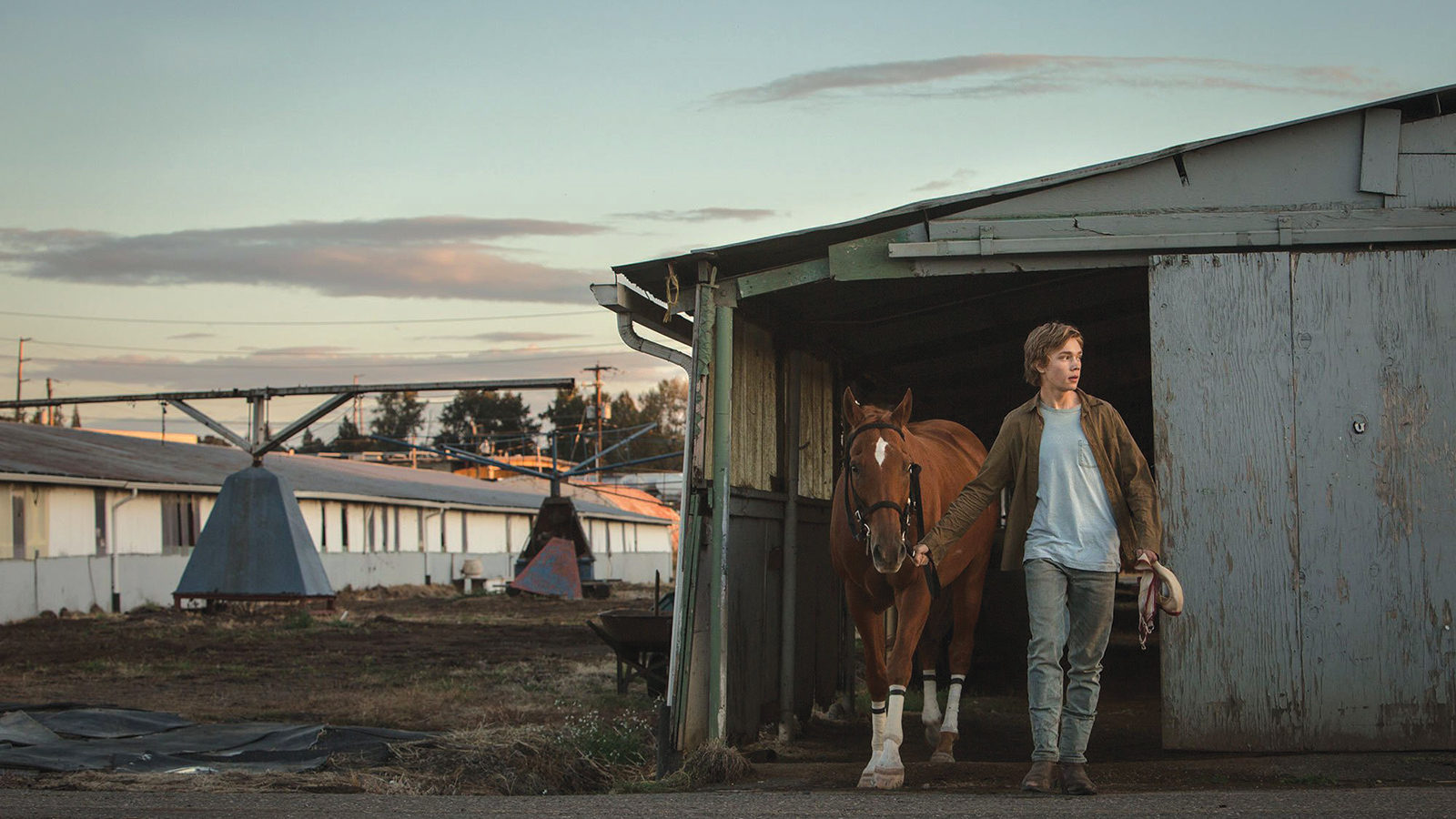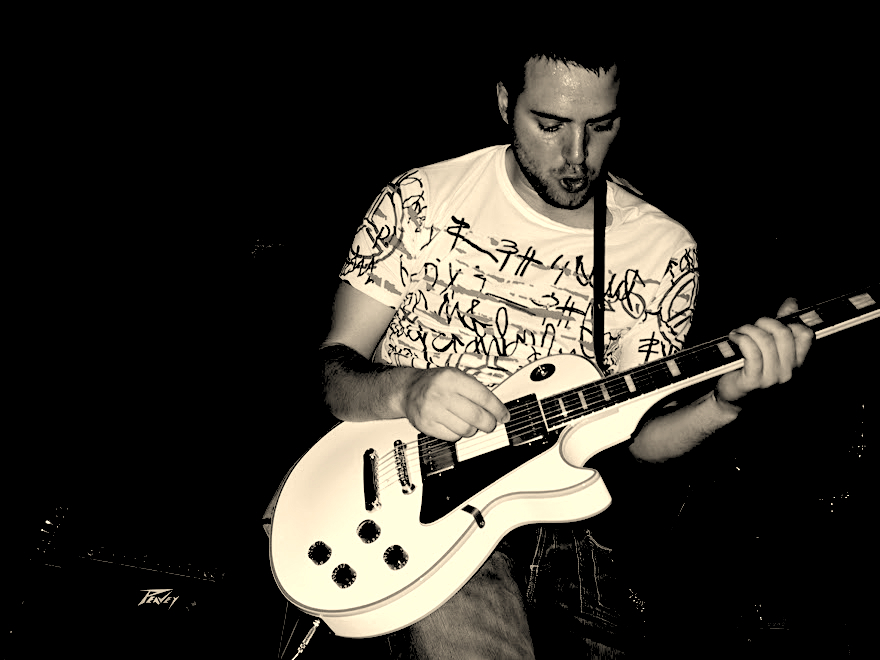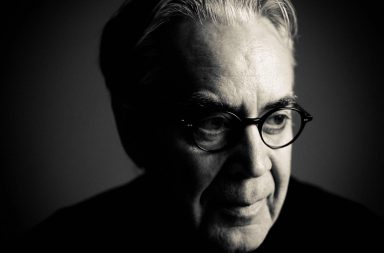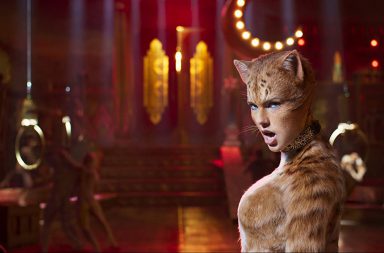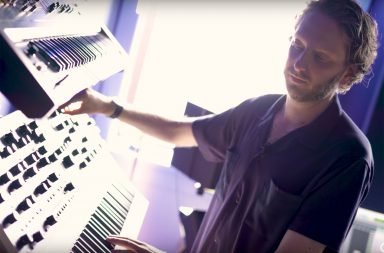If cinema has taught me anything over my past 20 years of movie-going experience, it’s that you can’t go and see a film with a horse in it without taking tissues with you. Because — mark my words — it will make you cry. This being said, I must add that I’m no equid enthusiast, to say the least. Never had posters of horses on my walls when I was kid. Never dreamed of going horseback riding in the wilderness or any fantasy of the sort. Nevertheless, should a horse appear in a film (a horse with a consistent storyline of course, I didn’t care for Colin Farrell’s horse in Alexander for instance) and it will probably bring tears to my eyes at some point. Artax, Atreyu’s horse in The NeverEnding Story? I cried. Into the West? Ah, stop it. War Horse? I nearly drowned in my own tears. Needless to say I was on the edge when I went to see Andrew Haigh’s Lean on Pete. There I was, in the darkness of the room, clutching my pack of tissues… Boy, did I use them.
Simply put, Lean on Pete is the story of Charley, a young adolescent who finds solace and warmth in his relationship with Pete, a horse bound to the slaughterhouse, when his fragile world falls apart. The film marks the fourth collaboration between Haigh and composer James Edward Barker. The musician wrote a brilliant minimalistic score to accompany Pete and Charley on their journey through the American wilderness. The raw sounds and the absence of melody or themes perfectly match the subtle mise-en-scène and magnify it. We had the nicest chat with James Edward Barker who told us about his collaboration with Andrew Haigh, how it was decided to drift away from traditional Hollywood scores and how he created these particular sounds that haunt the tracks he wrote.
It’s the fourth time you and Andrew Haigh have worked together, each time on a very different project. What were the challenges of scoring Lean on Pete?
Working with Andrew is a very calm and collective process. If there’s panic from my side, he manages to calm that down pretty quickly! So the challenge, actually, is just getting my head around on how much score and how big a score Andrew wants it. In the beginning, he wasn’t sure how much score he needed. When he temped the film, a lot of the music he used was my music, so I guess the challenge there was just to better myself (laughs)! He knew how much melody he wanted, should there be melody at all… I began to write a score that was quite melodic; we had cues for Pete, for Charley, which repeated in various parts of the film. And then I think Andrew felt… Well, Andrew doesn’t like any score leading the audience, typical Hollywood film scores, really leading the film and telling the audience what to feel. So, quite quickly, he encouraged me to lose a lot of melody, to lose a lot of the size and really start to concentrate on individual notes or noises, sounds that we could convey with emotion without leading the audience. From then, it evolved quite organically, actually.
At what point did you get involved in the making of Lean on Pete?
When they started editing, it must have been before summer 2016. I had a meeting with Tristan [Goligher, the film’s producer – Ed.] in August and I told him I would love to score the film, so he said he would pass some of my tracks to Andrew, who had not heard any of my stuff in the last two years, because he’d been away, doing 45 Years, etc. He then invited me to have a chat and they temped the film. They gave me a cut of the film then, and I think that was in November. I was looking at the film, I was writing little bits, but they wanted to wait until I had a more developed score. So I became fully involved in January and ended up recording from mid-March to late March. The film was delivered in May 2017, but I did come back in June to do a few more edits, because they did some extra mixing all the way up until August, actually. It was quite an extensive process, but it was great. I mean, this isn’t a super low-budget film, but they got the chance to do a really extended mix, which most low-budget films can’t do. I worked very closely with Joakim [Sundström], the sound designer. He’s great, very calm and experienced.
Can you tell me a bit about your influences for this score?
Andrew gave me a few films to watch… Paris, Texas was one of them. Of course, the score is far away from that, but he also gave me a few scores he wanted me to listen to. He wanted to incorporate slide guitar in the score, but we didn’t want it to be really on the nose, geographically. So, I ended up shifting in, putting through delay, sliding EBows, so that made it sound very different. In the beginning, it sounded a lot more melodic, I guess, I was inspired by the melodies Danny Elfman did for Big Fish, but it was never going to be that grand.
The score has a lot of haunting, glassy sounds that come from bowed instruments. How did you come up with this idea and did you think they would end up being so important in the score?
I guess one of the challenges of the score, as well, was that I wanted to record everything live and I had an idea of how to create these sounds, but there aren’t any samples of these sounds that I could find. I wanted to show Andrew, initially, what I was hoping the score would sound like, so I hired a percussionist, we ended up playing around with a lot of instruments that we could bow in an atypical way for a film score. So we bowed cymbals, vibraphones… And at the time when we were experimenting, I realised quite how prominent the bowed vibraphone was; that, accompanied by the bowed singing bowl, which Andrew always loved. We’ve been playing around with singing bowls all the way back to Five Miles Out. I knew it was always going to be a sound-based score, but I never realised how much it would help to bow instruments, and how much Andrew would love it. It sort of became Pete’s sound, and that happened quite early on.
When a subtle, minimalist score such as this one embodies the film’s atmosphere, how large is improvising a part of it?
Improvising was quite a big part when it came to using the strings, because I was trying to create washes of sounds and atmospheres with them, without actually playing them. We played around: we bowed the bridges, we bowed the pegs… We got the double bass played with plectrums, so we experimented a lot, with the horns and the guitars as well, with different pedals, different techniques. We spent days improvising with the string players, just to see what sounds we could get, but we improvised during recording as well. We were getting to play so softly, because of course, if we played hardly, we would actually hear a note. Charlie Andrew, my producer, doesn’t like to use too much compressors because you don’t have so much freedom once you have the recorded sound. The process felt very innovative.
Silence plays an important part in the film: Charley is alone most of the time and he’s still a kid, so he does not have a say in his confrontations to adults, his only true friend is a horse, so they only have a one-way verbal communication… Can you tell me a bit about the role of silence in your score?
I think there’s just as much importance in the silence between the notes as in the notes themselves. That was it: it was about how atmospheric and minimalist we can be, so we’ve opened a space for silence that would be for Charley and Pete, and it’s working. We discussed about it, Joakim and I, and it was exciting to try and work out how to do that. I think that’s why I created all these atmospheres where we could play around against silence without covering it. We couldn’t have the score here and the rest of the film here, you know. We had to be at an equal level. The notes themselves, when we actually hear notes, were played so softly that you can hear the beginning and the end are almost broken and played so softly that you have some sort of bounced off strings, in a way. It was really fun to do it.
You have mentioned Joakim Sundström, with whom you said you worked closely. Can you tell me a bit more about your experimentations with him on the score and sound design?
When I did Psych:9, sound designer Michael Powell and I helped each other a lot, we worked very closely and mixed the film together. But I did not work this close with a sound designer until Lean On Pete. Joakim and I talked a lot, we didn’t necessarily crossover into each other’s work and there was clear division between what was sound design and what was score, even though there are some elements in the score that you may identify as sound design. We had a lot of conversations, and I don’t think I was as much of help to him as he was for me (laughs)!
About your artistic relationship with Andrew. How would you say he motivates your work and what does he bring to you, as a composer, that no other director does?
I think Andrew is very compassionate, calm and collective. He doesn’t know what he wants with the music to start off with, and because of that he is very open to experimentation. It is a very organic and very natural process. He gives the composer a lot of freedom to try out things and he is not married to temp. A lot of directors can be very attached to the temporary score, which could be quite challenging for a composer. It’s a very liberating process, and you kind of never know where you really are going to end up, which is great. Even once I’ve recorded the score, mixed it, Andrew still has further thoughts about it, and we edit this, change that… It’s an ongoing process that never feels false. I think every composer has self-doubts, and if at any point I had to have that when scoring the film, Andrew would bring his sense of calm.
Can you tell me a bit about your next projects?
After I scored Pete, I did a couple of U.S. films: Dead On Arrival, which is a low-budget American thriller that has just come out in the States, and I finished a project for director Scott Mann, who I’ve worked with five times. He made a big action thriller called Final Score, with Pierce Brosnan and Dave Bautista. And I just started to work on my next project, which is called The Dark Outside, which they now renamed Gwen. It stars Maxine Peake, who just starred in Funny Cow, and it is the first feature film directed by William McGregor, which is a dark thriller set in the hills of Wales during the industrial revolution. It is a very atmospheric, gothic tale, so I guess it is quite close to Lean On Pete in the use of sounds in a different way, but it’s probably going to be a little bit bigger than Lean On Pete in terms of how much score there’s going to be – there’s currently much more score in the temp than there was in Pete.
Were you missing the horror/mystery genre?
I did a film called Don’t Knock Twice, but it was three years ago. So yeah, it’s been a while (laughs)!
Interview prepared, conducted and transcribed by Valentin Maniglia, and edited by Marine Wong Kwok Chuen
